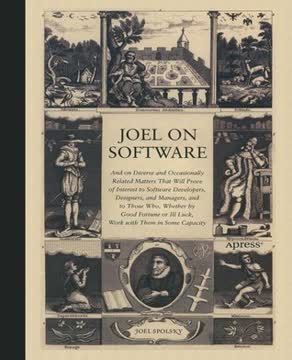Key Takeaways
1. Finding and keeping great developers requires active recruitment and a specific environment.
The great software developers, indeed, the best people in every field, are quite simply never on the market.
Recruitment is active. Since top developers are rarely looking for jobs on public boards, companies must proactively seek them out. This involves going to relevant conferences, leveraging internships to identify talent early, and building a community around the company or its products to attract like-minded individuals. Avoid relying solely on large, general job sites which yield a high volume of unqualified candidates.
Workplace matters. Beyond compensation, great developers seek specific conditions. They value private offices for focus, high-quality tools (monitors, chairs), a social environment with smart, non-jerky colleagues, and significant independence and autonomy in their work. Treating developers with respect and like "stars" is crucial for attracting and retaining them.
Money is secondary. While competitive pay is necessary for fairness, it's often not the primary motivator for top talent. If developers complain about salary, it's often a symptom of dissatisfaction with other aspects of the job, such as lack of respect, poor working conditions, or political dysfunction. A high salary alone won't compensate for a poor environment.
2. Effective management in software relies on identity and shared information, not just commands or incentives.
The goal here is to manage by making people identify with the goals you’re trying to achieve.
Command and Control fails. Military-style management, where leaders bark orders, is ineffective in high-tech teams. Managers often lack the detailed technical information held by individual contributors, leading to poor decisions. This method also alienates smart, autonomous developers who prefer to understand the 'why' behind tasks.
Econ 101 backfires. Managing solely through financial incentives (bonuses for specific metrics) is counterproductive. It replaces intrinsic motivation with weaker extrinsic motivation and encourages people to game the system to optimize for the metric rather than the desired outcome. This approach is an abdication of management's responsibility to build effective systems and train people.
Identity and information empower. The most effective method is Identity Management, fostering a sense of shared purpose and loyalty within the team (like a family). Crucially, managers must share the necessary information (e.g., financial goals, market context) so that individuals can make informed decisions that align with the organization's objectives, even when circumstances change.
3. A strong technical foundation, including "hard" concepts, is crucial for truly capable programmers.
Pointers and recursion require a certain ability to reason, to think in abstractions, and, most importantly, to view a problem at several levels of abstraction simultaneously.
JavaSchools fall short. Universities focusing solely on Java and object-oriented programming may fail to equip students with essential skills. Concepts like pointers (often taught in C) and recursion (functional programming) are traditionally "weed-out" material that require and develop crucial mental agility. Without these, understanding low-level systems like operating systems or high-level abstractions like parallel processing becomes difficult.
Beyond syntax. The value of learning languages like C or Scheme isn't just about knowing those specific languages, but about the way they train the brain. They force programmers to think about memory management, performance, and different levels of abstraction simultaneously. This mental flexibility is vital for designing robust software architecture and tackling complex problems.
Impact on innovation. Lack of exposure to these foundational concepts can hinder innovation. For example, the MapReduce algorithm, fundamental to Google's scalability, draws directly from functional programming concepts (Map and Reduce). Companies whose developers lack this background may struggle to invent or even understand such paradigms.
4. Software development is a craft distinct from computer science, demanding practical skills and clear communication.
Being able to write clearly on technical topics is the difference between being a grunt individual contributor programmer and being a leader.
CS vs. Development. A computer science degree provides theoretical foundations but doesn't automatically teach software development. Practical, programming-intensive courses are essential for gaining real-world coding experience. Many elite universities prioritize theory, leaving practical skills to be learned elsewhere.
The importance of writing. The ability to write and communicate clearly is paramount for programmers. It enables evangelism (like Linus Torvalds with Linux), persuasion within an organization, writing clear specifications and documentation, and collaborating effectively. Programmers who write well gain influence and are more valuable to a business.
In-house pitfalls. Many programming jobs involve "in-house software" for non-software companies. These roles can be unfulfilling because:
- Work is often expedient, not elegant.
- Projects stop once "good enough," limiting polishing.
- Programmers may have low status compared to core business staff.
Product companies, where software is the business, offer more opportunities for pride in craftsmanship and career advancement for developers.
5. Successful software design extends beyond usability to encompass social dynamics and emotional connection.
An application that does something really great that people really want to do can be pathetically unusable, and it will still be a hit.
Usability is necessary, not sufficient. While making software easy to use is important, it's not the only factor for success. Products that solve a strong need or offer compelling features can succeed despite poor usability (e.g., early Napster, text messaging). Conversely, highly usable software that doesn't solve a problem will fail.
Social interface design. For software mediating human-human interaction (social networks, forums), the "social interface" is critical. This involves designing how the software influences user behavior and community dynamics. It's about helping the society succeed, even if it means restricting individual users (e.g., faking spam acceptance).
Emotional appeal matters. Great software often hits "high notes" that resonate emotionally with users. This includes:
- Aesthetics and beauty (e.g., iPod design)
- Humor and personality (e.g., Winamp's website copy)
- Making users feel in control (e.g., iPod scroll wheel feedback)
These elements are often the result of top talent and are difficult for mediocre teams to replicate, creating sustainable competitive advantage.
6. Solving difficult, "gnarly" problems is where real business value and competitive advantage lie.
The market pays for solutions to gnarly problems, not solutions to easy problems.
Value comes from difficulty. Every job has a challenging, unpleasant core problem ("muck"). The ability to solve these difficult problems is what the market rewards ("brass"). Businesses built on solving easy problems face low barriers to entry and intense competition.
Simple isn't always valuable. While simple, easy-to-use applications are appealing, if they don't tackle a significant underlying complexity for the user or business, they may lack deep value. Companies that avoid all "gnarly" aspects (like supporting installable software across diverse environments) may limit their market reach and revenue potential.
Design as a gnarly problem. Creating elegantly designed and highly usable software is itself a difficult challenge. It requires significant talent and effort, making it a source of sustainable competitive advantage that is hard for competitors to copy, even if the surface appears simple. Continuously solving new, difficult problems allows a business to grow and expand its market.
7. Realistic scheduling, informed by data, is vital for managing scope and shipping successful products.
You want to be spending your time on things that get the most bang for the buck. And you can’t figure out how much buck your bang is going to cost without knowing how long it’s going to take.
Developers resist scheduling. Programmers often dislike creating schedules, viewing them as unrealistic or a chore. However, schedules are essential for making informed decisions about feature prioritization and resource allocation. Without them, projects tend to drift and run late.
Evidence-Based Scheduling (EBS). A reliable method involves breaking down work into small tasks (under 16 hours), tracking actual time spent (including interruptions) to calculate individual "velocity" (estimate/actual), and using this historical data in a Monte Carlo simulation to predict a range of possible ship dates with confidence levels. This accounts for individual estimation biases and unpredictable factors.
Schedules force cuts. A key benefit of realistic scheduling is that it highlights when the planned features exceed the available time. This forces necessary feature cuts, ensuring the most valuable features are prioritized and the product ships sooner. Features cut due to schedule pressure are often the least important ones anyway.
8. Refactoring and improving existing code is generally superior to starting over from scratch.
A lesser company, perhaps one run by an executive from the express-package-delivery business, might have decided to scrap the code and start over.
Rewrites are risky. Starting a code base from scratch is often tempting when the existing code is messy or wasn't designed for its current purpose. However, this is usually a mistake, as it discards accumulated knowledge (including bug fixes) and takes vastly longer than estimated, often failing to ship or introducing new problems.
Scrubbing is effective. A better approach is to "scrub" or refactor the existing code base. This involves making small, logical transformations to improve internal structure, readability, and maintainability without adding new features or breaking existing functionality. This process can be done incrementally and predictably.
Benefits of refactoring. Cleaning up code, even line by line, makes it easier to add new features later, reduces the likelihood of introducing new bugs (as you're not rewriting complex logic), and preserves the valuable, hard-won knowledge embedded in the existing code. It's a more efficient and less risky path to a healthier code base.
9. Pricing software involves understanding market dynamics, customer value, and long-term strategy.
The biggest mistake software companies make is charging too little, so they don’t get enough income, and they have to go out of business. An even bigger mistake, yes, even bigger than the biggest mistake, is charging too much, so they don’t get enough customers, and they have to go out of business.
Demand curves slope down. Generally, the higher the price, the fewer customers will buy. The goal is not to maximize units sold, but to maximize
[ERROR: Incomplete response]
Last updated:
FAQ
1. What is More Joel on Software by Joel Spolsky about?
- Collection of essays: The book is a sequel collection of essays, rants, and insights on software development, management, design, and business, aimed at software developers, designers, and managers.
- Author’s expertise: Joel Spolsky, founder of Fog Creek Software and creator of the Joel on Software blog, draws on his extensive industry experience, including time at Microsoft.
- Wide-ranging topics: It covers managing people, hiring, software design, project management, business strategies, and the realities of running software companies.
- Blend of technical and managerial: The essays mix technical depth with practical management and business advice, making it relevant for a broad audience in tech.
2. Why should I read More Joel on Software by Joel Spolsky?
- Practical, real-world wisdom: Joel shares actionable advice from his career, including managing teams, hiring, and running software businesses.
- Engaging and accessible style: The book combines humor, candid storytelling, and deep insights, making complex topics easy to understand and enjoyable to read.
- Timeless lessons: Despite being published in 2008, its lessons on software design, project management, and developer hiring remain highly relevant.
- Broad appeal: Both technical and non-technical readers in the software industry will find valuable takeaways.
3. What are the key takeaways from More Joel on Software by Joel Spolsky?
- Hiring and managing talent: Great developers are rare and crucial; effective management relies on intrinsic motivation and team alignment.
- Design and usability matter: Small, incremental improvements in design lead to great user experiences and successful products.
- Project management realities: Evidence-Based Scheduling and understanding legacy complexity are essential for realistic planning and delivery.
- Customer service and business growth: Exceptional customer service and thoughtful feature prioritization drive long-term business success.
4. Who is Joel Spolsky, author of More Joel on Software, and why is his perspective valuable?
- Industry veteran: Joel Spolsky is a recognized software development expert, founder of Fog Creek Software, and creator of the influential Joel on Software blog.
- Microsoft and Yale background: He has a computer science degree from Yale and worked on Microsoft Excel, giving him deep technical and business insight.
- Thought leader: Joel’s writing has shaped how many developers and managers think about software, hiring, and business.
- Community builder: He has fostered a large community of software professionals through his writing and company initiatives.
5. What are Joel Spolsky’s key insights on hiring and managing great software developers in More Joel on Software?
- Great developers are rare: The best programmers are often not actively seeking jobs and are found through internships, communities, or direct recruitment.
- Effective hiring methods: Joel recommends building talent pipelines via internships and engaging with developer communities.
- Management styles: He contrasts Command and Control, Econ 101 (incentives), and Identity Management, advocating for the latter to foster intrinsic motivation.
- Team alignment: Creating a culture where employees identify with company goals leads to higher productivity and satisfaction.
6. How does More Joel on Software explain the impact of design on software usability and community building?
- Design is incremental: Small, continuous improvements in design accumulate to create superior user experiences.
- Philosophies in design: Joel uses examples like Apple vs. Microsoft font rendering to illustrate trade-offs in design decisions.
- Social interface design: He emphasizes designing for human-human interaction, not just human-computer, to build strong communities and reduce abuse.
- Attention to detail: Every minor fix or feature can help more users succeed with the software.
7. What is Evidence-Based Scheduling (EBS) as described by Joel Spolsky in More Joel on Software?
- Data-driven project planning: EBS breaks projects into small tasks, tracks actual time spent, and uses historical data to predict completion dates.
- Monte Carlo simulations: The method generates probability curves for shipping dates, offering realistic timelines.
- Accounts for interruptions: EBS naturally includes time lost to meetings or distractions, improving schedule accuracy.
- Active management tool: It helps identify bottlenecks, adjust workloads, and supports continuous refinement of project plans.
8. Why are Microsoft Office file formats so complicated, according to More Joel on Software, and what workarounds does Joel Spolsky suggest?
- Legacy and feature complexity: Office formats must support every feature, including legacy ones, resulting in immense complexity.
- Binary format challenges: Even with documentation, formats like Excel’s BIFF are hard to implement due to subtle behaviors and multiple systems.
- Recommended workarounds: Joel suggests using Office automation (COM) for complex tasks or opting for simpler formats like CSV, HTML, or RTF when possible.
- Pragmatic approach: Letting Office handle conversions or using simpler formats saves time and reduces errors.
9. What advice does Joel Spolsky give to aspiring programmers and computer science students in More Joel on Software?
- Master hard concepts: He warns against “JavaSchools” that avoid teaching pointers and recursion, which are essential for mental flexibility.
- Importance of writing: Strong writing skills are crucial for effective communication and leadership in programming roles.
- Seek practical experience: Internships and hands-on, programming-intensive courses help students build real skills and stand out to employers.
- Learn fundamentals: Exposure to C and functional languages like Scheme is vital for deep understanding.
10. How does Joel Spolsky recommend running successful beta tests in software development, as described in More Joel on Software?
- Controlled beta over open beta: Use an application process to select committed testers, avoiding overwhelming or unhelpful feedback.
- Long, structured beta cycles: Plan for 8–10 weeks with multiple releases, and avoid adding features mid-beta to ensure thorough testing.
- Manage tester engagement: Only a fraction of testers provide useful feedback, so recruit accordingly and stagger releases to maintain interest.
- Feedback quality over quantity: Focus on actionable feedback to improve the product before release.
11. What are Joel Spolsky’s key tips for providing remarkable customer service in a software business, as outlined in More Joel on Software?
- Fix problems at the root: Address both the immediate issue and its underlying cause to prevent recurrence.
- Take responsibility: Admitting fault and using empathetic communication defuses customer anger and builds goodwill.
- Turn customers into fans: Exceptional service, such as hassle-free returns and quick resolutions, creates loyal advocates.
- Long-term benefits: Great customer service reduces support costs and is more effective than traditional marketing.
12. What are the most memorable stories and quotes from More Joel on Software by Joel Spolsky, and what do they illustrate?
- Bill Gates spec review: Joel recounts Bill Gates reading and annotating every page of a 500-page spec, highlighting the importance of thoroughness and attention to detail.
- “Smart, and Gets Things Done, Not a Jerk”: This hiring mantra emphasizes the value of intelligence, productivity, and teamwork.
- “To create a usable piece of software, you have to fight for every fix, every feature, every little accommodation that will get one more person up the curve.” This quote illustrates the painstaking effort required for software quality.
- Stories as teaching tools: Joel’s anecdotes make abstract lessons concrete and memorable for readers.
Review Summary
More Joel on Software is a collection of blog posts by Joel Spolsky, covering various aspects of software development and business. Readers appreciate Spolsky's wit, insights, and clear writing style. The book offers valuable advice on programming, management, and the software industry. While some content may be dated, many principles remain relevant. Reviewers found the book enjoyable and informative, particularly for those in software development or entrepreneurship. Some critics note repetition from previous works and dated material, but overall, the book is well-received for its practical wisdom and engaging content.
Joel On Software Series
Similar Books
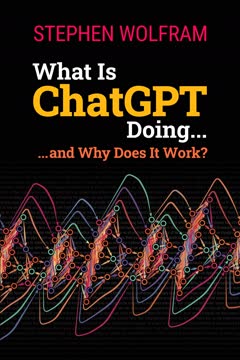
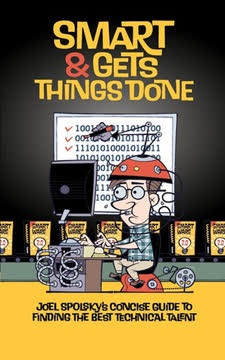
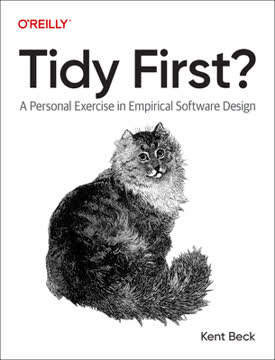
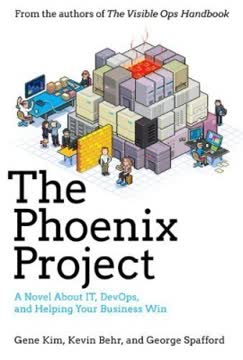

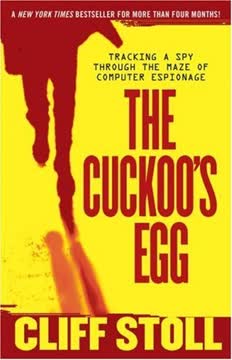
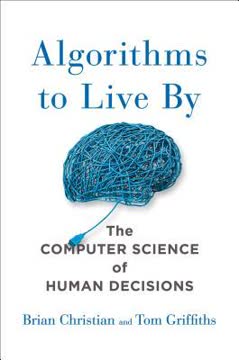



Download PDF
Download EPUB
.epub digital book format is ideal for reading ebooks on phones, tablets, and e-readers.

